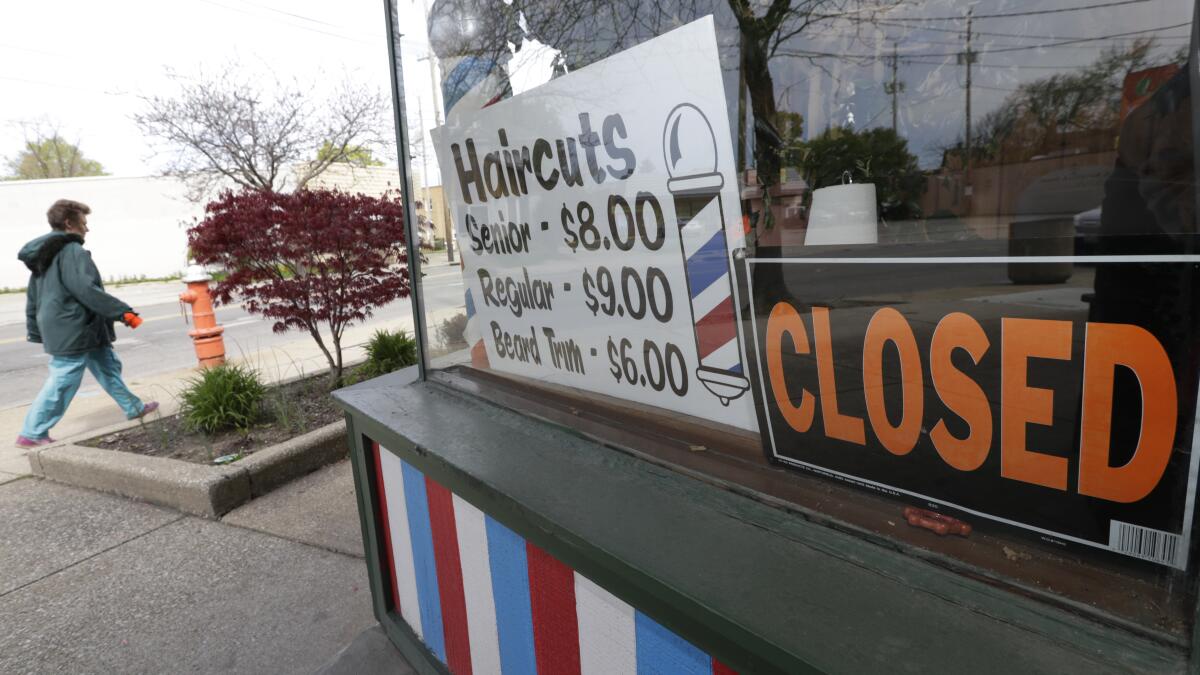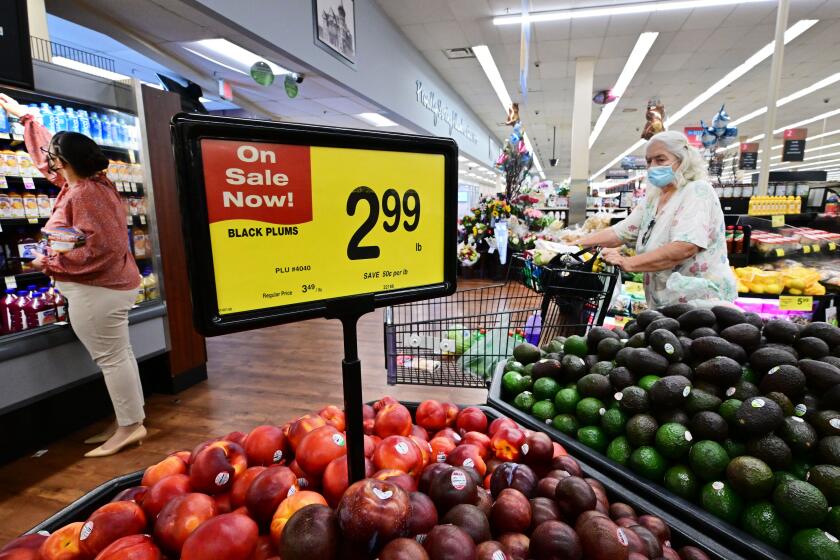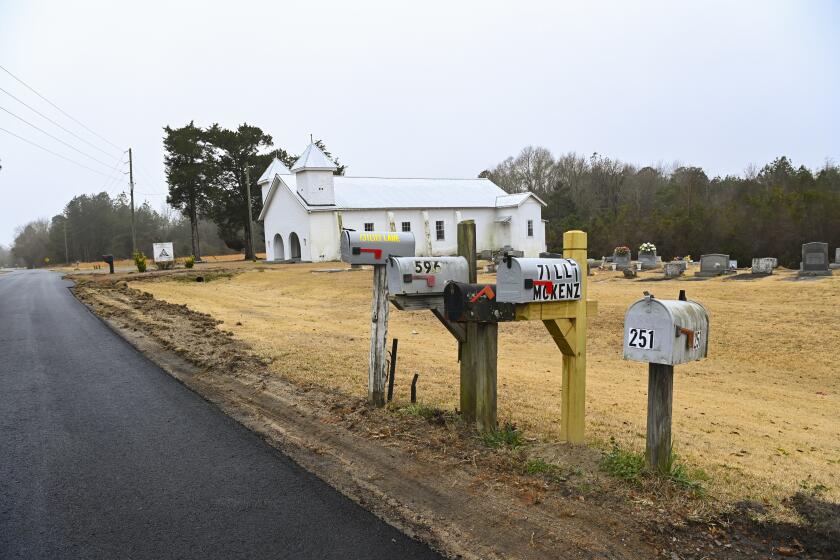One overlooked way to fight opioid deaths? Give people something to do

- Share via
Across the country, communities are struggling to respond to the opioid crisis, some with broader access to medical strategies and more treatment programs. Yet the national overdose death rate continues to rise, with opioid deaths in 2022 remaining at an all-time high.
There are, of course, many causes of addiction, and community approaches must be multifaceted. But what if we could intervene earlier on the path to addiction?
Clay County in eastern Kentucky is a place that might offer an intriguing answer. At its peak, in 2006, the county recorded 2.58 opioid prescriptions for every man, woman and child. Even now that rate is still 1.38. When crackdowns made the pills less available, methamphetamine and illicit fentanyl followed.
Why this scourge? When surveyed, ordinary citizens and local leaders in Clay County almost always say the same thing: There is “nothing to do here but drugs.” People mourn the loss of the local movie theater, the roller rink, the beauty and barber shops and the bowling alley.
These places — labeled “social infrastructure” by the sociologist Eric Klinenberg — are where community members gather to form social bonds. When these bonds are strong, they create a safety net that can catch people when they fall. As institutions like these disappear in Central Appalachia — first after the collapse of its company towns but more recently because of population loss and other factors — that net has been torn to shreds.
Locked cabinets safeguarding merchandise are now ubiquitous in retailers. Anti-theft measures like these erode customers’ spirits and our social fabric, even though it’s unclear whether shoplifting has become the national crisis some claim.
Earlier research testing the “nothing to do here but drugs” thesis found that a low density of nonprofits and civic organizations within a community is indeed strongly tied to overdose death rates.
For our own investigation, we drew data from a census of U.S. businesses to measure changes in social infrastructure venues in every county over time. We then examined whether there was a relationship between changes in social infrastructure and changes in the overdose death rates, all else held equal. We found that shifts in social infrastructure rival those of other, more well-accepted economic factors, such as wages and unemployment rates.
There is compelling support for this idea from other types of research too — for instance with laboratory rats.
A solitary, caged rat with access to drugs is very likely to get addicted, overdose and even die, drug abuse researchers have found. Experiments that dig deeper, however, find that if the cages are enriched with “something to do” — fun things to explore and other rats to provide companionship — the rats will mostly ignore the drugs. Strikingly, none overdose.
Having something to do may even be able to pull people out of addiction. American troops stationed in Vietnam used drugs in massive quantities. Why? As Anne Case and Nobel laureate Angus Deaton argue in their book “Deaths of Despair and the Future of Capitalism,” it was “because they were bored out of their minds” and the drugs were extraordinarily cheap. When these soldiers returned home and reentered a well-structured life, drug use plummeted, often essentially vanishing even for some who had very serious addictions. When we recently asked Deaton what he thought of the thesis that people get into using drugs because there is nothing else to do, he said “this can sound non-serious, but I think it is profound, something like the reason.”
The $1.2-trillion 2021 American Rescue Plan and Infrastructure Act provided a huge source of money for investment in distressed communities and rural areas. Yet that money is often restricted to projects that aim at economic revitalization, such as rebuilding the local main street or building roads, bridges and rural hospitals. But these investments can mean little to a community’s most vulnerable.
In ‘The Injustice of Place,’ three scholars outline a deep American dysfunction hiding in plain sight: the fact that geography can seal a citizen’s fate.
Social infrastructure is often excluded from investments because it is thought to be unimportant. The U.S. Department of Agriculture’s rural development agency, whose mission includes bringing “prosperity and opportunity to rural areas,” is very limited in its ability to invest in community resources that are labeled “recreational” in nature, such as movie theaters, swimming pools, bowling alleys and arcades. Yet no community can stay healthy without these places — where people meet, form bonds and create civic support systems.
The nation’s public libraries, which serve as community hubs in most cities, receive minuscule federal funding, and despite a recent budget increase, those funds are “not enough to maintain in-demand library services and pay library workers, who carry out those services.”
Public libraries and other so-called recreational institutions are as vital to the health of rural communities as other forms of infrastructure, such as roads and bridges.
Changing the mandate of government agencies to include investments in social infrastructure is a tall order, but it should be pursued. In the meantime, private foundations have an opportunity to fill this critical gap by partnering with government agencies such as the Biden administration’s Rural Partners Network.
Doing so could help address an important factor that fuels the opioid catastrophe and build faith with the millions living in rural communities who feel all but forgotten.
Kathryn J. Edin is a professor of sociology and public affairs at Princeton University. H. Luke Shaefer is a professor of public policy at the University of Michigan. Timothy J. Nelson is the director of undergraduate studies in sociology at Princeton University. They are the co-authors of “The Injustice of Place: Uncovering the Legacy of Poverty in America.”
More to Read
A cure for the common opinion
Get thought-provoking perspectives with our weekly newsletter.
You may occasionally receive promotional content from the Los Angeles Times.











